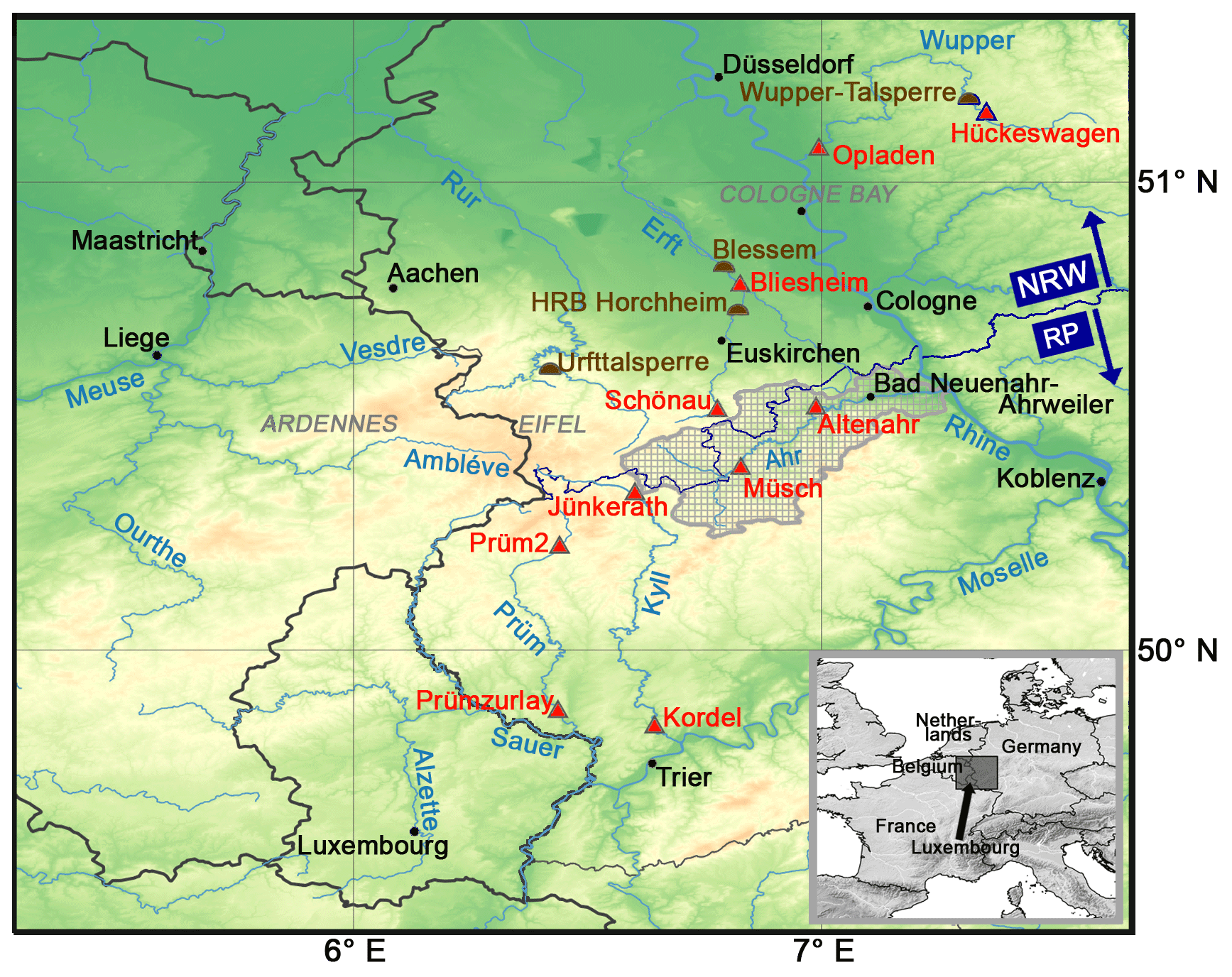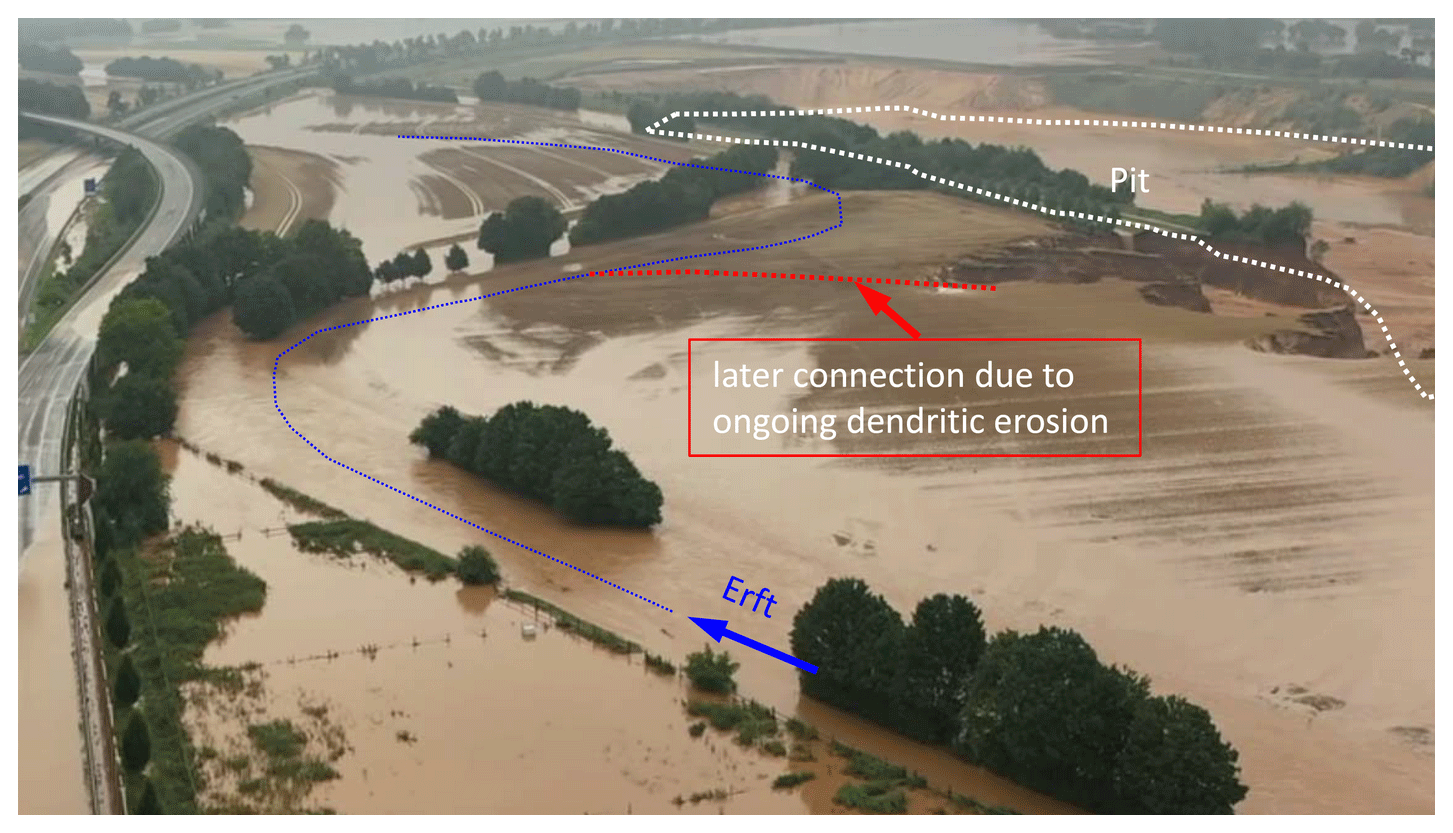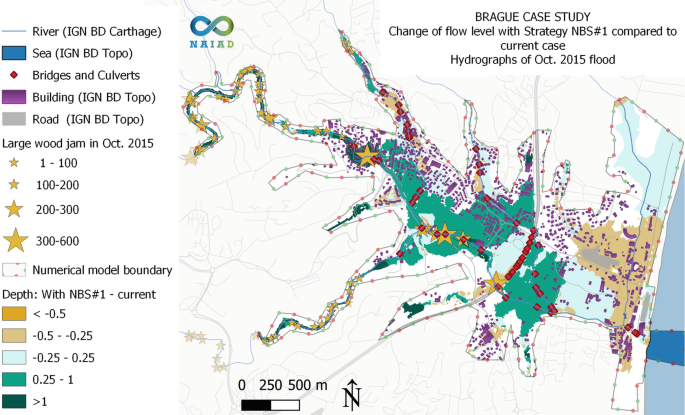NHESS - A multi-disciplinary analysis of the exceptional flood
Abstract. Heavy precipitation over western Germany and neighboring countries in July 2021 led to widespread floods, with the Ahr and Erft river catchments being particularly affected. Following the event characterization and process analysis in Part 1, here we put the 2021 event in the historical context regarding precipitation and discharge records and in terms of the temporal transformation of the valley morphology. Furthermore, we evaluated the role of ongoing and future climate change on the modification of rainfall totals and the associated flood hazard, as well as implications for flood management. The event was among the five heaviest precipitation events of the past 70 years in Germany. However, consideration of the large LAERTES-EU regional climate model (RCM) ensemble revealed a substantial underestimation of both return levels and periods based on extreme value statistics using only observations. An analysis of homogeneous hydrological data of the last 70 years demonstrated that the event discharges exceeded by far the statistical 100-year return levels. Nevertheless, the flood peaks at the Ahr river were comparable to the reconstructed major historical events of 1804 and 1910, which were not included in the flood risk assessment so far. A comparison between the 2021 and past events showed differences in terms of the observed hydro-morphodynamic processes which enhanced the flood risk due to changes in the landscape organization and occupation. The role of climate change and how the 2021 event would unfold under warmer or colder conditions (within a −2 to +3 K range) was considered based on both a pseudo global warming (PGW) model experiments and the analysis of an RCM ensemble. The PGW experiments showed that the spatial mean precipitation scales with the theoretical Clausius–Clapeyron (CC) relation, predicting a 7 % to 9 % increase per degree of warming. Using the PGW rainfall simulations as input to a hydrological model of the Ahr river basin revealed a strong and non-linear effect on flood peaks: for the +2 K scenario, the 18 % increase in areal rainfall led to a 39 % increase of the flood peak at gauge Altenahr. The analysis of the high-resolution convection-permitting KIT-KLIWA RCM ensemble confirmed the CC scaling for moderate spatial mean precipitation but showed a super CC scaling of up to 10 % for higher intensities. Moreover, the spatial extent of such precipitation events is also expected to increase.

NHESS - A multi-disciplinary analysis of the exceptional flood event of July 2021 in central Europe – Part 1: Event description and analysis

NHESS - A multi-disciplinary analysis of the exceptional flood event of July 2021 in central Europe – Part 1: Event description and analysis

Toward an adequate level of detail in flood risk assessments - Sieg - 2023 - Journal of Flood Risk Management - Wiley Online Library
NH.1527-6996.0000524/asset/698808bc-d78e-4bea-883f-3a8269209d53/assets/images/large/figure16.jpg)
Quantification of Compound Flooding over Roadway Network during Extreme Events for Planning Emergency Operations, Natural Hazards Review

How demographic developments determine the management of hydrometeorological hazard risks in rural communities: The linkages between demographic and natural hazards research - Clar - 2019 - WIREs Water - Wiley Online Library

NHESS - A multi-disciplinary analysis of the exceptional flood event of July 2021 in central Europe – Part 1: Event description and analysis

Giving Room to the River: A Nature-Based Solution for Flash Flood Hazards? The Brague River Case Study (France)
HESS - Home

A review of freely accessible global datasets for the study of floods, droughts and their interactions with human societies - Lindersson - 2020 - WIREs Water - Wiley Online Library
HESS - Home









